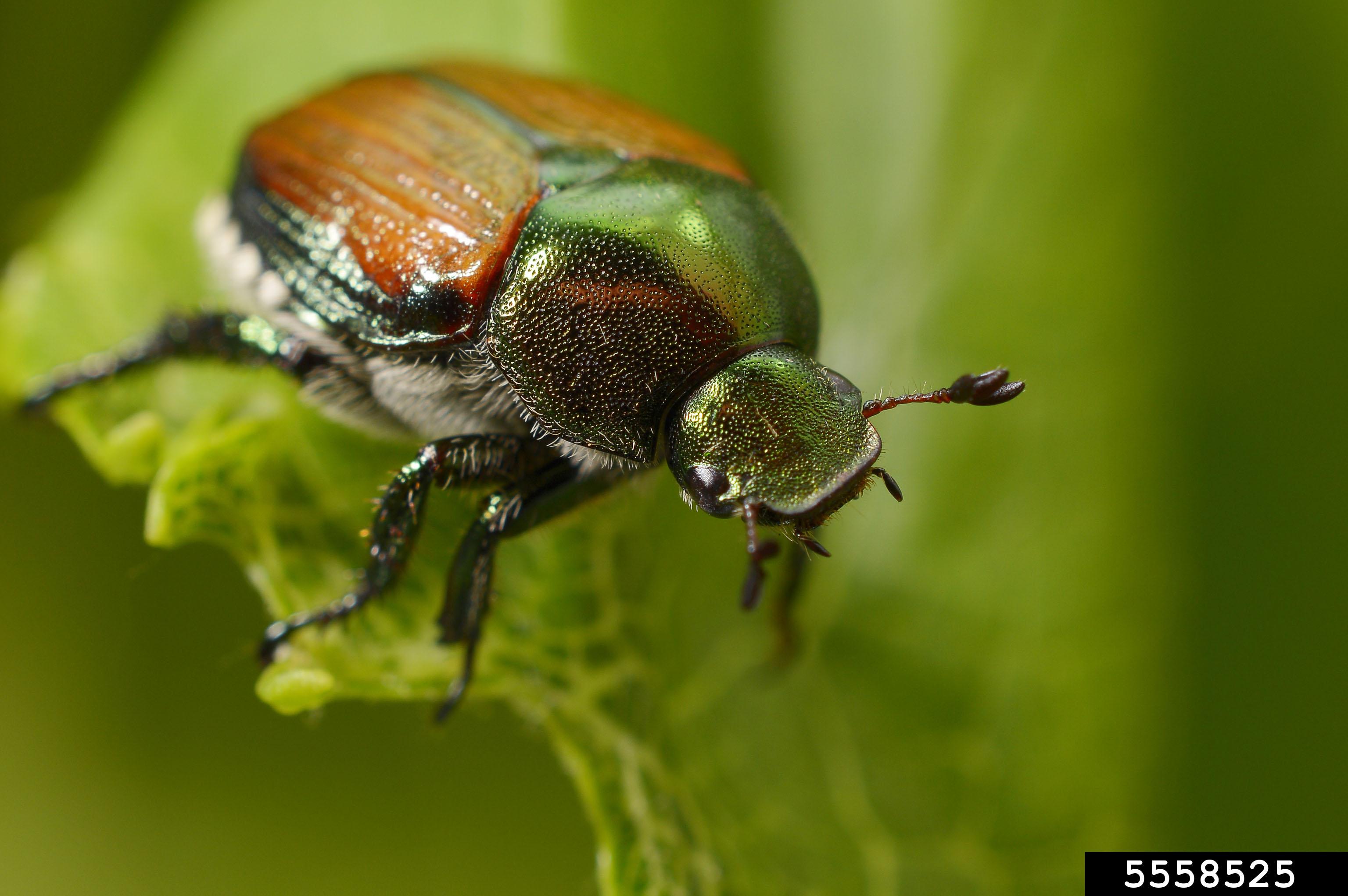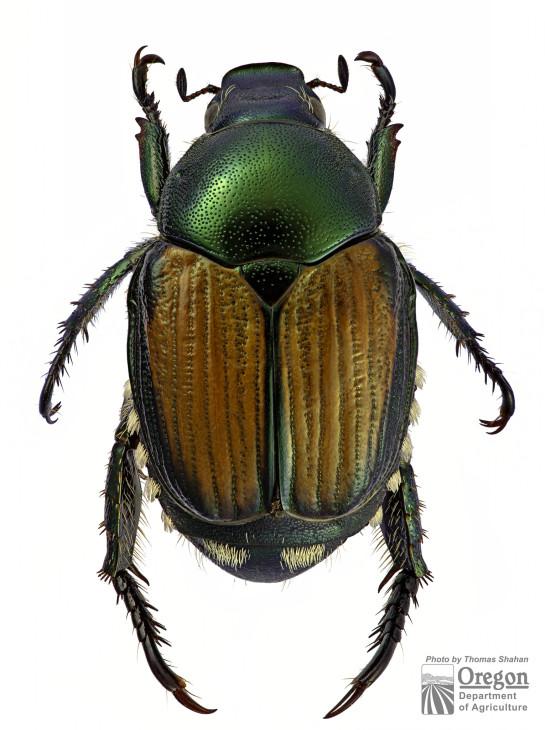japanese beetle life cycle colorado
Shiny metallic green one-half inch long beetles swarm plant foliage feeding on the top of the. Observing Japanese beetles feeding on plants is quite common since the adult beetle feeds on about 300 species of trees shrubs ornamental and fruit trees in addition to vegetable crops.

Get Ready For Japanese Beetles Ross Tree Company Denver Colorado
Japanese beetles have one life cycle per year.

. In most parts of its range the Japanese beetle life cycle takes just a year but in northern areas it may stretch to two years. Hauling hoses around is a drag. Scientists and experts were caught off guard by the ability of the pest to establish itself in our region thinking that Japanese beetle an insect that likes moisture and humidity would never become a problem in the semi-arid Colorado climate.
Larvae and eggs of Japanese beetle need at least 10 inches of soil moisture to thrive. The grub hatches and begins eating roots until late September when it starts getting colder. The adults emerge during the summer months to feed on above ground plant material returning to the soil to lay eggs in the late summer.
Adult beetles feed on foliage flowers and fruit of many plants see the list below while their offspring feed mostly on grass roots. Japanese beetles spend most of their lives as a soil grub. The first beetles out of the ground seek out suitable food plants and begin to feed immediately.
The female adult lays its eggs in the ground in July. The grubs are C-shaped and approximately 125 inches when fully grown. Grubs are up to 1 inch long C-shaped and have six legs.
Let the outdoor specialists at SunCo install and maintain a sprinkler system that will give your lawn the water it needs without lifting a finger. Around the very end of June or early in July the adult beetles will emerge from your lawn and start showing up on your plants. However some adults may be found into September.
The Japanese beetle was first introduced into Colorado in the early 1990s from nursery stock purchased in the mid-western United States. Adults usually emerge in June females begin egg laying until September. Biology and Life Cycle one-year complete life cycle from egg larva pupa adult.
Japanese beetle has a life cycle that takes one year to complete. Japanese Beetle in Colorado The Japanese beetle is an invasive pest that was introduced into the eastern United States over 100 years ago. Exact date ranges vary depending on weather.
Adult beetles are most active in the heat of the day and are voracious feeders on ornamental and agricultural plant. Adult Japanese beetles feed on the foliage of a wide variety of plants while grubs feed on the roots of turf garden plants and ornamentals. Japanese Beetles actually start out as white grubs in the ground below your lawn and garden.
The progressive life stages of the Japanese beetle during that period are egg larva white grub pupa adult. Adults usually emerge from grass turf where they finished their underground life cycle in. Larvae live in the soil where they feed on plant.
In the spring as the soil warms Japanese beetle grubs migrate to the surface briefly feeding on grass roots. It took them awhile but Japanese beetles have made it to Colorado and their summer feeding frenzy has gotten notice lots of notice. In late June and early July adult beetles emerge.
Let the outdoor specialists at SunCo inspire your great outdoors. Colorado was originally thought to be protected from invasive Japanese beetlePopillia japonicacolonization and establishment due to our semi-arid climate. Orkin Termite Treatment Pest Control Exterminator Service.
Adults may begin to emerge from the soil in early June and are usually most abundant in early summer from late June through early August. Japanese Beetles have one generation per year and adult females lay 40-60 eggs in the soil that hatch into grubs about 10 days later4. Larvae that have matured by June pupate and the adult beetles emerge from the last week of June through July.
The grubs feed until October and will remain inactive until spring March April when they start to feed again. Japanese beetles go through a one-year life cycle but if you have a yard you care about the real joy with beetles comes in the second half of the summer in Colorado. In females the spine is rounded and males it is sharper 3.
Japanese beetle has a one year life cycle. On warm sunny days the new beetles crawl onto low growing plants and warm for a while before taking flight. Females excavate soil cavities several inches deep for their eggs which they lay in masses.
Eggs hatch in the early fall and the larvae remain underground feeding on roots until pupation in the late spring. Adult beetles can be detected in traps until early September depending on weather conditions. Life cycle of the Japanese Beetle.
A Japanese beetle life cycle is completed in one year. Since the early 1900s the insect has made its way West moving long distances in nursery stock root balls of trees shrubs and turfgrass plants sold in trade and about 1 to 5 miles per year on its own. The egg larva and pupa life cycle stages develop underground and unless soil is removed or dug into these life stages will not be seen.
Each female lays up to 60 eggs as an. Pay attention to the Japanese beetle life cycle for one year and understand that effective management involves dealing with both adult beetles and their offspring larvae also called white grubs. Adults emerge from late June into summer.
They feed on foliage and mate during the day. Through winter the Japanese beetle in the larval stage a white grub found within soil. Adult females lay eggs in moist sod in July.
In Colorado adult beetles emerge from the soil mid to late June with peak emergence occurring in mid to late July. What is the life cycle of the Japanese beetle. Life cycle of Japanese beetles.
Japanese beetles have a one-year complete life cycle from egg larva pupa adult. Adult beetles lay eggs during the summer which hatch about 2 weeks later. Japanese beetle larvae are annual white grubs.
With understanding of the Japanese beetles life cycle and the management options that can be used during the larval and adult stages well continue to enjoy our landscape plants and gardens for many years. Japanese beetles often feed in groups and can quickly cause substantial plant damage. At this point the grub burrows deeper into the ground to rest for the winter.
Japanese beetles have a one-year life cycle adult. Japanese Beetle Life Cycle. Please take a few minutes and complete the Japanese Beetle Plant Survey to help with a regional plants list of plants they like and dont like.

Tips On How To Control Japanese Beetles In Colorado

Japanese Beetles Japanese Beetles Japanese Beetle Control Slugs In Garden

Japanese Beetle In Colorado Department Of Agriculture

Effective Management Remains Elusive For Beetle That Eats Almost Anything

Tagawa Has The Tools You Need To Fight Japanese Beetles


